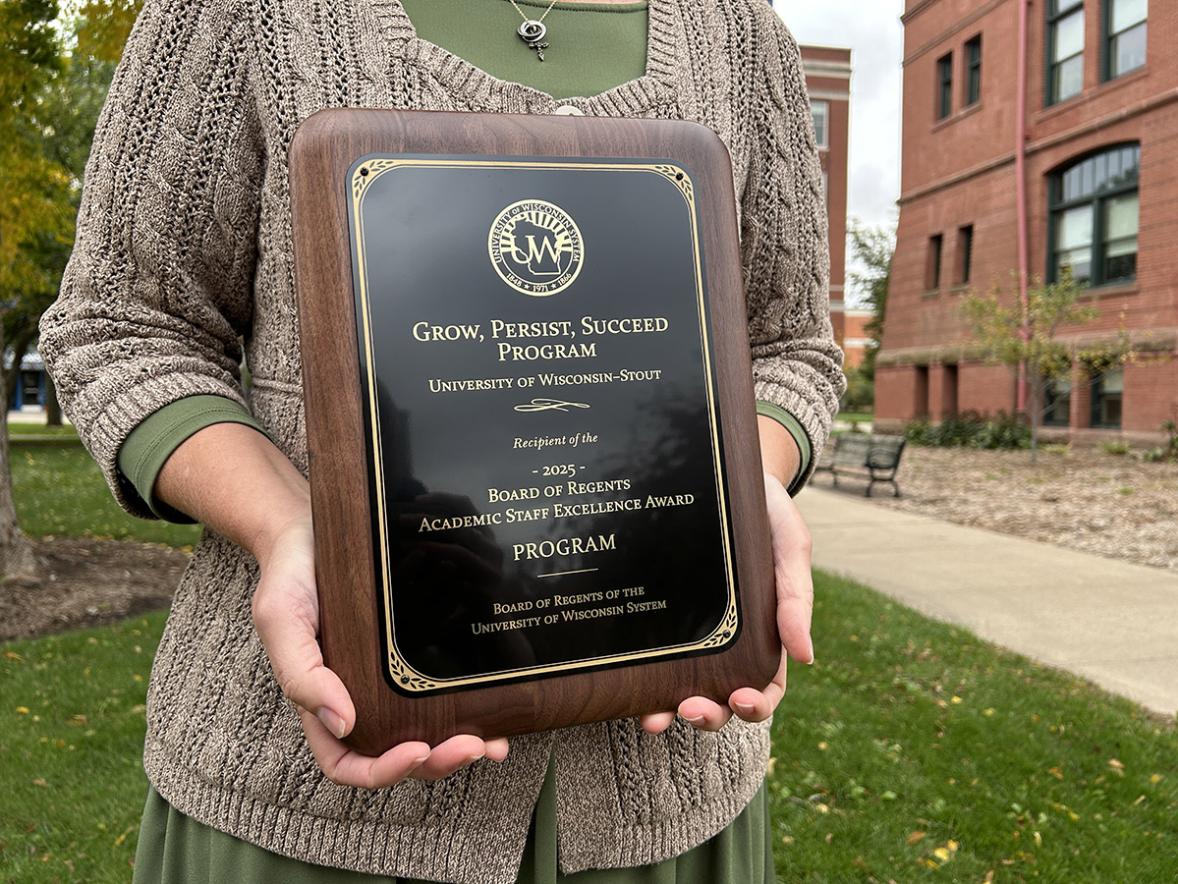Down a hall in the Jarvis Hall Science Wing, 20 first- to fourth-year students and two community members gather around tables in a white-washed biology lab. A poster illustrates the “Life Cycle of a Tree,” and the “Nature Alphabet” is depicted through photographs of the intricate pattern of a blue butterfly wing, the flamboyant pink s-shape of a flamingo’s neck and the hypnotic coil of a snail shell. Large plastic models featuring the anatomical parts of a flower line the tops of several cabinets.
At the head of the lab stands Senior Lecturer Arthur Kneeland. He’s preparing his students in his general education class, Plants and People, for an outing around campus to practice tree identification.
“The goal of the class is for students to begin to see the differences in plants; to not just see nature as a sea of green, but to recognize the individual pieces of it,” Kneeland said. “These are life skills. We introduce them to the scientific method and to the dichotomous key to identify native and cultivated plants.”
Working in small groups, students familiarize themselves with the key – a handout – a scientific tool used to identify organisms based on observable traits. The key consists of a series of statements with two choices per step, a decision-tree diagram, to lead the students to the correct identification of each tree they observe.
“Let’s go outside and look at plants!” Kneeland jumps up and ushers his students out the door.
The sky is overcast, and a cool breeze rustles the leaves on trees that have yet to turn their autumn colors.
The class gathers around Kneeland under the branches of a large tree standing between Jarvis Hall and the Memorial Student Center, towering over a stone and concrete sculpture.
Kneeland plucks a leaf from a low branch and walks his students through reading the key and identifying the tree. They note the lobed, toothed leaf and the pattern of the leaves on each branch, eventually identifying the red maple, its leaves still a bright summer green.
Molly Hongslo, an animation and digital media junior from Lakeville, Minn., is taking the class because a couple of her friends recommended it. “It’s neat that we get to go outside and look at plants,” she said. “I’m excited to start growing and propagating our own plants, and we get to visit the conservatory at Como Zoo.”
Leading the group across 10th Avenue toward Heritage Hall, Kneeland stops under another tree near the building’s main entrance and places his palm on the trunk, peering up into the sprawling branches.
“I have a weird emotional connection to this tree,” he said, explaining how he helped save the sapling when he worked on the grounds crew during his undergrad at UW-Stout in the early 2000s. He and other crew members continuously watered the sapling to leach out the lime from newly poured concrete near the young tree’s roots.
Kneeland asks a student to reach up and pluck one of the large seeds dangling from a low-hanging branch. He slices the seed open with a pocketknife, revealing the smooth, creamy inner nut of the bur oak. Its acorn’s frilly cap is one of the tree’s key characteristics.
“It’s edible, but a bitter fruit,” he said. “You can mash it, pat it, bake it into a crust.”
Heading up the sidewalk, Kneeland shares lessons on buckthorn and invasive species removal, and on respecting trees, pointing out a young black oak with a damaged trunk. The class works to identify a linden tree, whose heart-shaped leaves have been damaged by a recent hailstorm.
Ben Phipps, a fourth-year animation and digital media student from Inver Grove Heights, Minn., enjoys the hands-on applied learning that Stout offers. “Every class you take at Stout is hands-on. So, with every class being super interactive, time management is important,” he said. “You have to make sure you have a schedule and not prioritize just one class. You have to devote time to each class, even outside of the classroom.”
Back across the street, behind the Applied Arts Building, the students step in among the vibrant, soft boughs of an evergreen. A layer of dried needles crunches underfoot. The low shrubs and tangle of trees rival the splash of color of the neighboring Art & Design mural.
Kneeland approaches a lone evergreen. Small pine cones sprinkle the ground. He explains the Jack pine’s strategy of inducing seeds to germinate, requiring the intense, brief heat of a wildfire
“Complications of wildfire management and the restriction of natural wildfires for the sake of property protection can change the diversity of a region and inhibit the growth of new trees,” he said. “Plants and people can have a complicated relationship.”





